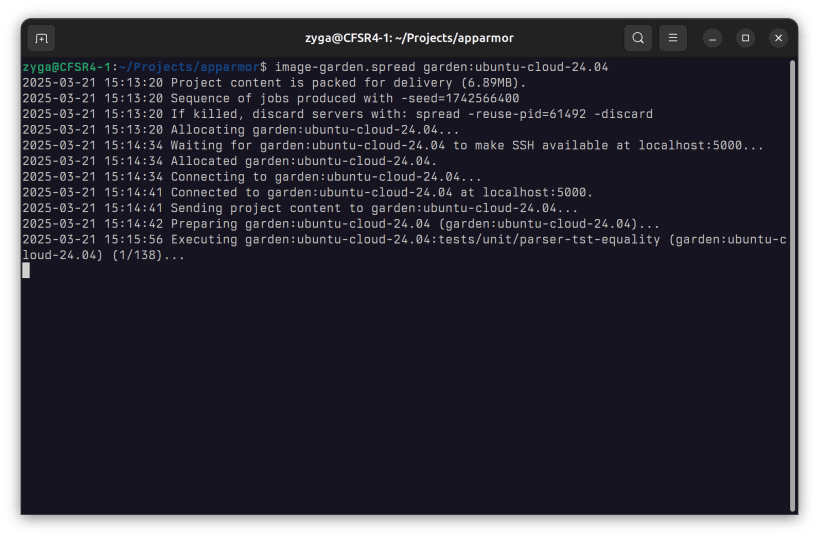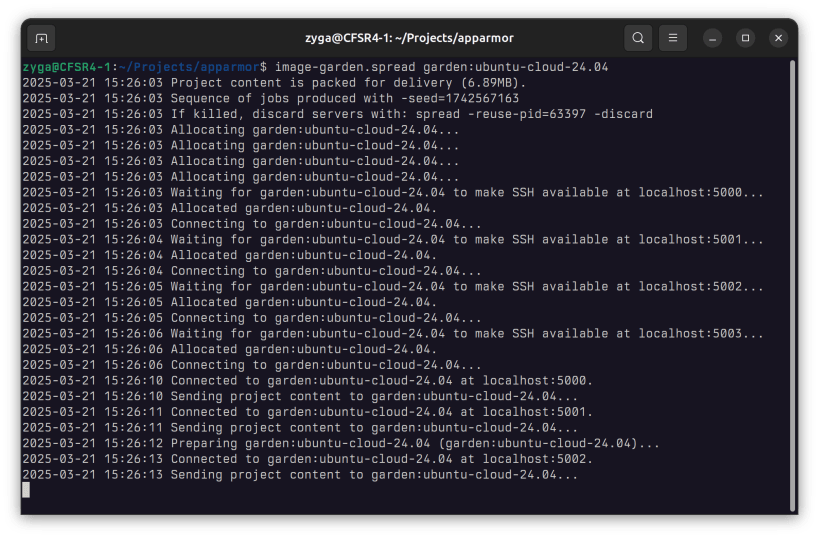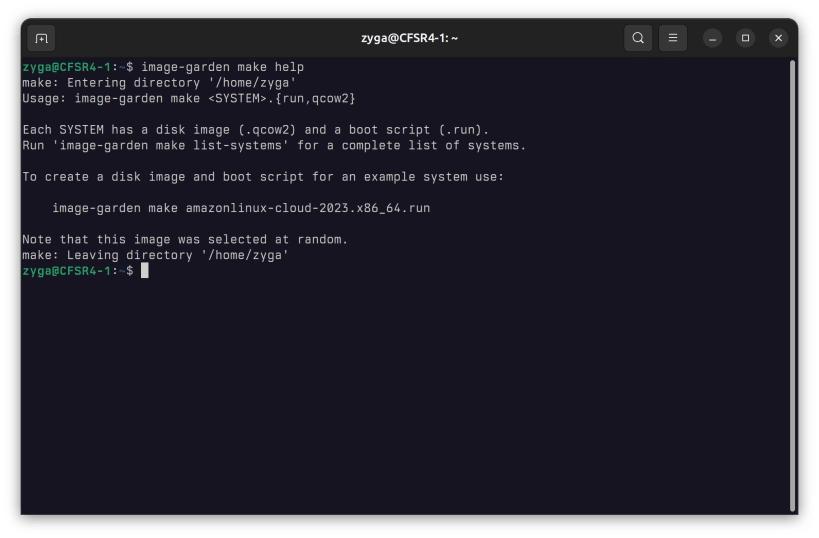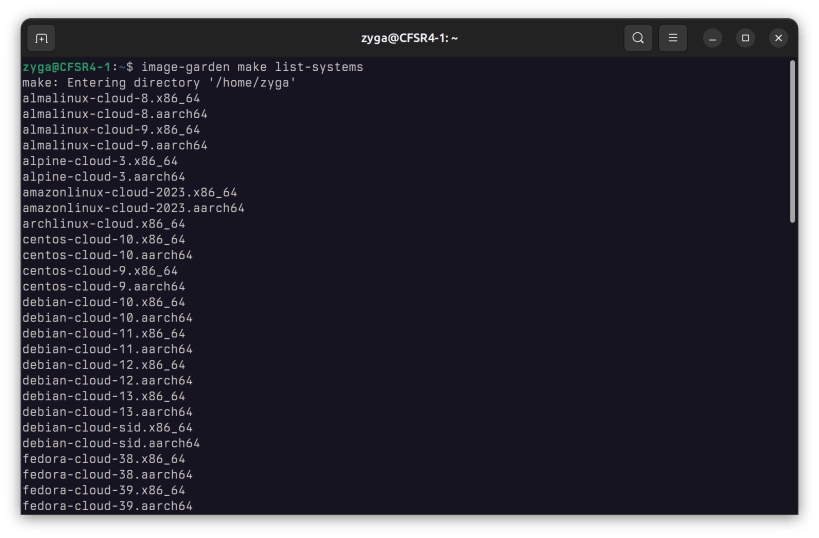




Image Garden can download, initialize and operate virtual machine for testing software against popular operating systems.
Thanks to the bundled copy of spread (https://github.com/snapcore/spread) it can be used to perform real-world tests of a software project as it would be running on a particular release of Debian, Ubuntu, Ubuntu Core, Fedora, openSUSE, Arch Linux, Amazon Linux, CentOS, Alma Linux, Rocky Linux, Alpine Linux and more.
See the integration pain points before they happen to your users or customers. Perform the same set of tests locally and in CI/CD stacks like GitHub Actions and GitLab Pipelines. Spread execution across many virtual machine instances to take advantage of all the available CPU cores. Use cloud-init to automatically create and maintain tailored disk images that fit the requirements of your project.
You are about to open
Do you wish to proceed?
Thank you for your report. Information you provided will help us investigate further.
There was an error while sending your report. Please try again later.
Snaps are applications packaged with all their dependencies to run on all popular Linux distributions from a single build. They update automatically and roll back gracefully.
Snaps are discoverable and installable from the Snap Store, an app store with an audience of millions.

Snap can be installed from the command line on openSUSE Leap 15.x and Tumbleweed.
You need first add the snappy repository from the terminal. Choose the appropriate command depending on your installed openSUSE flavor.
Tumbleweed:
sudo zypper addrepo --refresh https://download.opensuse.org/repositories/system:/snappy/openSUSE_Tumbleweed snappy
Leap 15.x:
sudo zypper addrepo --refresh https://download.opensuse.org/repositories/system:/snappy/openSUSE_Leap_15.6 snappy
If needed, Swap out openSUSE_Leap_15. for, openSUSE_Leap_16.0 if you’re using a different version of openSUSE.
With the repository added, import its GPG key:
sudo zypper --gpg-auto-import-keys refresh
Finally, upgrade the package cache to include the new snappy repository:
sudo zypper dup --from snappy
Snap can now be installed with the following:
sudo zypper install snapd
You then need to either reboot, logout/login or source /etc/profile to have /snap/bin added to PATH.
Additionally, enable and start both the snapd and the snapd.apparmor services with the following commands:
sudo systemctl enable --now snapd
sudo systemctl enable --now snapd.apparmor
To install image-garden, simply use the following command:
sudo snap install image-garden
Browse and find snaps from the convenience of your desktop using the snap store snap.

Interested to find out more about snaps? Want to publish your own application? Visit snapcraft.io now.